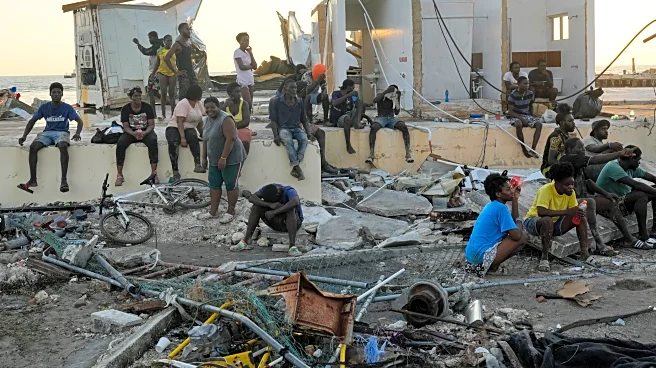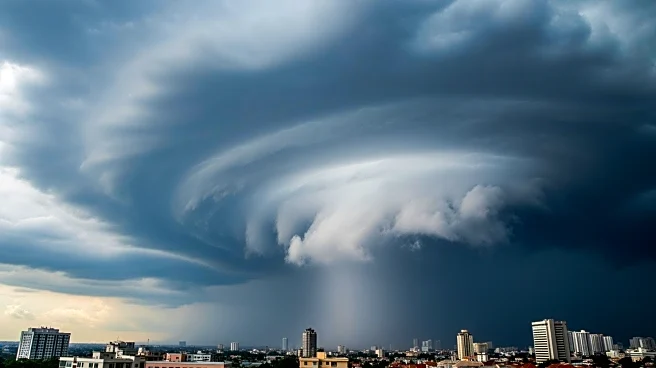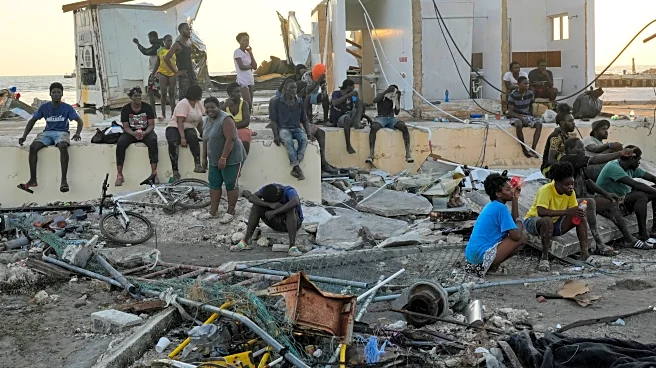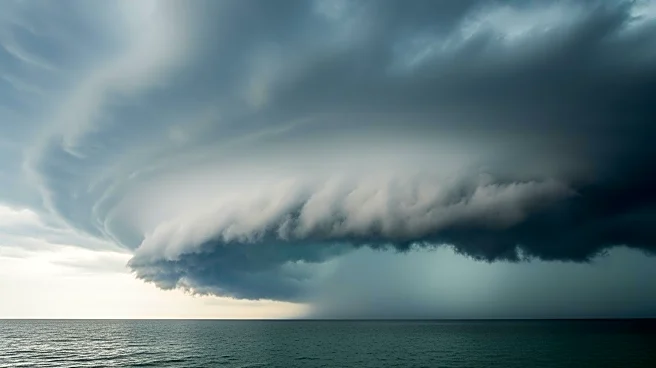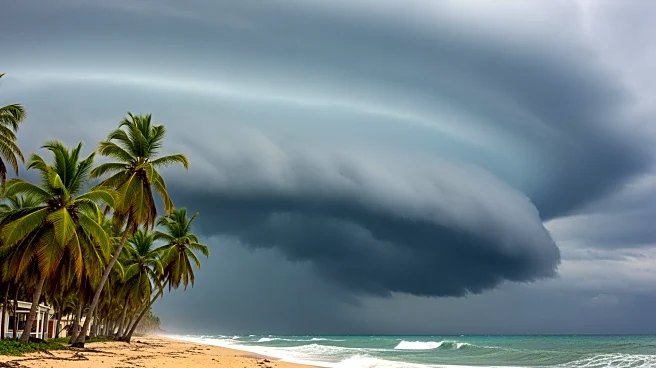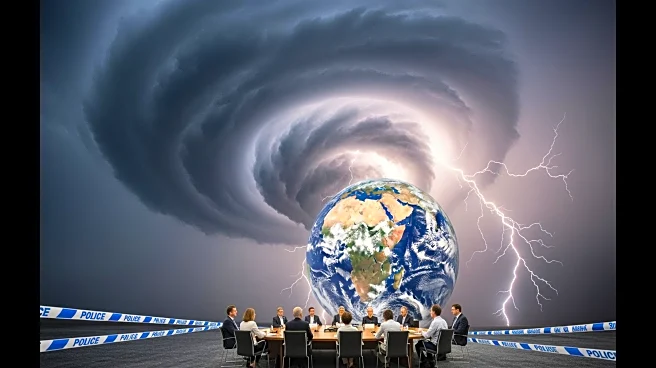What's Happening?
Hurricane Melissa is poised to make landfall in Cuba, following its passage over Jamaica. The storm is expected to hit early Wednesday morning, bringing heavy rain and tropical storm-force winds to the
region. Hurricane-force winds are anticipated to arrive late Tuesday, generating up to 12 feet of life-threatening storm surge, particularly around the landfall area. The center of Melissa will traverse eastern Cuba and enter the Atlantic Ocean by sunrise. The hurricane is projected to move through the central and southeastern Bahamas on Wednesday, potentially as a Category 3 or high-end Category 2 hurricane. This will result in heavy rainfall, flash flooding, landslides, damaging winds, and dangerous storm surge.
Why It's Important?
The impending arrival of Hurricane Melissa poses significant risks to Cuba, with forecasts indicating up to 30 inches of rain in southeastern regions, which could lead to life-threatening flash flooding and mudslides. The destructive winds, expected to reach 130 to 140 mph, threaten serious damage to infrastructure, including buildings, trees, and power lines. The storm surge, predicted to reach 12 feet, could cause severe coastal flooding. The hurricane's impact on Cuba and subsequent trajectory through the Bahamas and potentially near Bermuda highlights the broader regional threat posed by such powerful storms, affecting local economies, infrastructure, and public safety.
What's Next?
As Hurricane Melissa progresses, it is expected to increase its forward speed by Wednesday evening, moving northeastward. The storm could pass near Bermuda by Thursday night, bringing heavy rain and strong winds. Preparations and emergency responses are likely underway in affected areas, with potential evacuations and disaster management efforts to mitigate the impact. Monitoring the hurricane's path and intensity will be crucial for timely responses and minimizing damage.
Beyond the Headlines
The impact of Hurricane Melissa underscores the vulnerability of Caribbean nations to severe weather events, highlighting the need for robust disaster preparedness and climate resilience strategies. The frequency and intensity of such storms may prompt discussions on climate change adaptation and infrastructure improvements to better withstand future hurricanes.




